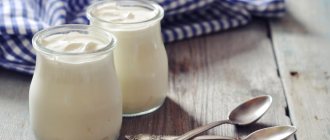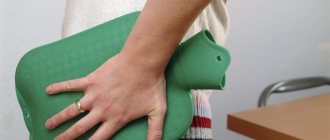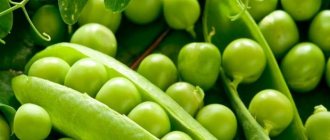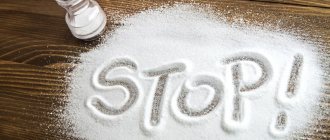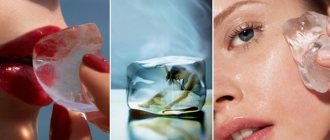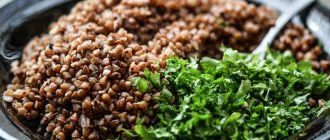General nutritional rules for kidney patients
Compliance with these rules is mandatory in the diet for kidney stones. If symptoms appear, it is recommended:
- Reduce or eliminate table salt consumption to 7–8 grams per day, and in case of high blood pressure to 5 grams.
- Limit protein (meat, fish, eggs, legumes, cottage cheese) to 80 grams, and in case of renal failure or exacerbation of pyelonephritis to 20–40 grams.
- Use only vegetable broths, since meat broths contain extractive substances that damage the diseased kidney.
- Exclude hot and spicy foods, smoked meats, pickles and marinades, and alcohol.
- Divide daily food into 6 meals.
Fats and carbohydrates are allowed almost without restrictions, excluding baked goods made from yeast dough.
During urolithiasis, it may be necessary to switch to kidney table No. 7:
- table 7A - prescribed in the first week of exacerbation, salt should not be eaten at all, protein is allowed in an amount of no more than 20 grams per day, vegetable food;
- table 7B - less strict, prescribed at the beginning of recovery, salt is prohibited, you can eat up to 45–60 grams of animal protein food per day, and 125 grams of cottage cheese;
- table 7B - for nephrotic syndrome, high protein (110–120 g);
- table No. 7G - for hemodialysis, characterized by an increased proportion of proteins, the presence of 2–3 g of salt, and fluid limitation to 0.7 l/day.
A diet for urolithiasis does not meet the body’s needs, and therefore requires additional intake of multivitamins and microelements.
Therapeutic nutrition for children with various types of crystalluria
In the development of renal pathology, metabolic changes that arise as a result of disturbances in salt metabolism and manifest themselves in the form of various clinical symptoms play an important role.
The formation of nephrolithiasis, a common pathology among the adult population, begins in childhood. The development of crystalluria (hyperoxaluria, hyperuraturia, hyperphosphaturia, etc.) is due to various reasons, with common factors most often being:
- limited fluid intake and, accordingly, the release of a small amount of urine;
- eating disorders;
- oversaturation of urine with salts;
- urinary tract infections; absence of crystallization inhibitors in urine.
The most important reason for the appearance of certain salt crystals is oversaturation of urine as a result of complex physicochemical processes with the formation of crystallization centers.
Oversaturation of urine can be transient or permanent and can occur after eating foods rich in phosphates, purines, calcium (Ca) or vitamin C in the evening, as well as with insufficient fluid intake. In urine, salt crystals are deposited on the surface of epithelial cells, urinary cylinders, and red blood cells. When a sufficient amount of liquid is consumed, the nucleoli formed in the urine become mobile, repel each other, float freely and are usually washed away by the flow of urine. However, with low fluid intake, the ongoing process of urine supersaturation and salt precipitation, the nucleoli of the crystals unite under the influence of the force of electrochemical bonding and form small stones, the size of which gradually increases.
Urine is a complex electrolyte containing ions that constantly interact with the salts of Ca and phosphorus (P). Nephrolithiasis develops when the urine, at a certain temperature and pH, is no longer able to maintain the salt in dissolved form. Since body temperature is a more or less constant value, the pH (acidity) of urine is of great clinical importance for the process of crystal formation.
When the urine pH increases to 6.0 and above (alkaline reaction), phosphate ions (usually insoluble Ca phosphates) are detected in the urine, and when the urine pH decreases below 5.5 (acidic reaction), urate salts (uric acid salts) more often precipitate. . Ca oxalates are determined in urine with a slightly alkaline or slightly acidic reaction.
Kidney stones with a diameter of less than 5 mm, as a rule, are washed out with urine without medical intervention, with the exception of the prescription of painkillers while the stones pass through the urinary tract. Kidney stones larger than 5 mm rarely pass on their own and increase in size over time. Stones larger than 10 mm in diameter should be removed surgically or lithotripsy.
Stone recurrence rate
In 60% of patients with crystalluria who had clinical and urological confirmation of urolithiasis, relapse of stone formation is possible over the next 7 years. Experience shows that the younger the child, the higher the likelihood of recurrence of stones.
Characteristics of various types of crystalluria
Hyperoxalaturia is increased excretion of Ca oxalate salts in the urine. In childhood, the most common disorders of calcium and oxalate metabolism are the most common, the precursors of the latter being predominantly oxalic acid and vitamin C.
In clinical practice, secondary hyperoxalaturia predominates, which can be isolated or combined with pyelonephritis. The composition of the diet plays an important role in the formation of this type of crystalluria. This is due to the fact that certain types of products have a high content of vitamin C and oxalic acid, which under certain conditions contributes to the crystal formation and precipitation of calcium oxalate salts in urine. In addition, the crystallization process is greatly influenced by the disruption of the kidneys’ secretion of protective colloids, which normally maintain oxalic acid in a dissolved state.
In recent years, a direct connection has been established between the development of hyperoxaluria and a decrease in the number of colonies of Oxalobacter formigines bacteria in the child’s gastrointestinal tract. The reduction in the number of these bacteria is proportional to the duration of antibiotic therapy for various diseases of the urinary system. In this regard, the prescription of long-term preventive courses of treatment with uroseptics in a maintenance dose for pyelonephritis or urinary tract infections should be carried out against the background of a hypooxalate diet.
Hyperuraturia (hyperuricosuria) is an increase in urinary excretion of urate or uric acid at a urine pH of 5.5 or lower. Excessive amounts of uric acid is an endothelial “poison”, leading to a decrease in the level of urokinase in the urine with local inhibition of renal fibrinolysis processes. Unlike hyperuraturia, hyperuricemia can be asymptomatic for a long time, but subsequently leads to a persistent decrease in renal function and the formation of interstitial nephritis.
Timely detection of uricosuria - before the level of uric acid in the blood increases - allows you to prescribe adequate dietary measures in the early stages.
Hyperphosphaturia is an increase in urinary excretion of phosphate salts (magnesium, ammonium and calcium phosphates), which occurs when the urine is alkaline (above 6.0). The formation of sodium and potassium phosphate salts occurs rarely; they can form during any urine reaction, but these salts are highly soluble and their elimination does not require special therapy. Along with the nutritional factor, the increased excretion of phosphate salts is aggravated by the layering of urinary tract infections caused by the microorganism Proteus mirabilis, which produces urease and significantly affects the reaction of urine by alkalizing it.
Slightly soluble salts of Ca phosphates precipitate, resulting from a violation of the ratio of P and Ca, increased excretion of the latter in the urine and loss of acid valencies by the body. In this case, the acid-base balance is disturbed towards alkalosis. In addition, with phosphaturia there is a complex chain of neurohumoral-renal disorders.
Clinical manifestations of crystalluria
The clinical picture of various types of salt metabolism disorders in children does not have specific signs and is polymorphic in nature: children are emotionally excitable, dry skin or allergic skin rashes are often noted. Children drink little liquid and produce little urine; causeless headaches, intermittent pain in the abdomen or lower back, dysuric phenomena in the form of frequent or “false” urge to urinate, and discomfort when urinating appear. Changes in urine tests are characterized by slight leukocyturia (10-15 p/vision) in the absence of bacteriuria, microhematuria (up to 5-7 p/vision), trace proteinuria, which, as a rule, are transient in nature. More constant is the detection of oxalate, urate or phosphate salts of varying degrees of severity in general urine tests. When studying the daily excretion of salts in urine, their quantitative increase is revealed. Kidney functions at this stage of the disease remain intact. In the absence of adequate therapy, the disease can progress: changes in urine sediment become frequent, the osmotic concentration function of the kidneys decreases, and signs of interstitial nephritis form.
These clinical manifestations are often combined with changes in the mucous membranes of the vulva and urethra in the form of vulvitis, vulvovaginitis, urethritis of varying severity, which have a protracted course and are difficult to treat.
Treatment of crystalluria
All measures for this pathology should be aimed at preventing the progression of the disease and include dietary correction, adequate drinking regimen in combination with drug therapy.
Currently, the herbal preparation canephron (solution or pills) is widely used, prescribed 15 drops (children under 5 years old) and 30 drops (children over 5 years old) 3 times a day, or 1 pill 3 times a day for high school children age. The duration of therapy is at least 2-3 months. 2 courses per year, then a metabolite complex is prescribed: vitamin B6 (pyridoxine) 0.02 g per day and “Aevit” (complex of vitamins A and E) 1 capsule (0.2 g) per day for 1 months
Particular attention is paid to the sanitation of foci of infection in the gastrointestinal tract and the treatment of intestinal dysbiosis using probiotics: bifidumbacterin (5 doses 1-2 times a day), Linex (children under 2 years old - 1 capsule 3 times a day, from 2 to 12 years old - 1-2 capsules 3 times a day, over 12 years old - 2 capsules 3 times a day), normoflorins B, L, D (15-30 ml per dose 2-3 times a day), fermented milk products. This is especially true during the period of long-term maintenance therapy with uroseptics (furazidine (furagin) in the amount of 1/2 therapeutic dose at night for 3-6 months).
Note 1. The therapeutic dose of the drug varies: for children the drug is prescribed at a daily dose of 5-7 mg/kg body weight, for long-term treatment - at a daily dose of 1-2 mg/kg. For preventive purposes, the drug is prescribed 50 mg (1 tablet) 1 time/day. (preferably in the evening).
If a child has kidney stones and signs of renal tubular acidosis (acidosis, persistent alkaline urine, deformation of the lower extremities), a citrate mixture is prescribed for a long time (at least 1 year), the equivalent of which is blemarene (½-1 teaspoon per day, in depending on age).
Note 2. The dose of the drug is selected individually, depending on the composition of the stones. Treatment is carried out under urine pH control. It is prescribed in 3 doses.
Diet therapy
For children with various types of crystalluria (isolated or combined with urinary tract infection), diet No. 5 is recommended, in which the content of the main nutritional ingredients corresponds to the age-related needs of the child. This diet excludes foods with a high content of certain nutrients that are involved in the pathogenesis of one or another type of crystalluria, are excreted by the kidneys and aggravate the course of the disease.
General principles for constructing diets for crystalluria
- Limiting the intake of nutrients (protein, oxalates, urates, phosphates), the metabolic products of which are excreted by the kidneys.
- Correction of disturbances in nitrogen and water-electrolyte balance, acid-base status, hypercrystalluria.
- Exclusion from the diet of foods that increase sensitization of the child’s body.
- When excluding foods high in oxalates, dietary Ca balance should be maintained to prevent the development of bone disorders.
- Limiting the consumption of animal protein at night, which helps reduce the acid valence and acidity of urine.
- Compliance with the drinking regime (taking into account the type of crystalluria), control of consumed and excreted liquid.
- Culinary food processing involves steaming, boiling, stewing, and baking. First courses are vegetarian.
- Table salt is not limited (it is allowed according to age requirements; it can be used both in its natural form and in the form of salted products).
- When expanding the diet (persistent decrease in the excretion of salts in the urine), excluded and limited foods and dishes are given every other day in the first half of the day.
For children with hyperoxalaturia, diet No. 5 has been developed - hypooxalate. The content of basic nutrients and energy value of the diet correspond to the age needs of the child. The set of products of the hypooxalate diet corresponds to diet No. 5, however, products with a high content of vitamin C, oxalic acid and oxalates are excluded from the diet, and products with a high content of Ca are limited.
Restriction in the diet of foods high in oxalates can lead to hypocalcemia with subsequent disruption of the susceptibility of Ca-sensitive (G-protensin-bound) receptors to vitamin D, a decrease in the production of vitamin D, an increase in bone resorption, a decrease in bone mass and the development of manifestations of osteoporosis of varying severity. In this regard, it is necessary to periodically include Ca-containing foods in the diet: 3 times a week, in the first half of the day.
Patients are prescribed additional drinks in the form of mineral waters, mainly alkaline, sweet compotes, decoction of apple and pear peels - at least 1 l/day. for children under 10 years old, and at least 1.5-2 l/day. for older children; In this case, it is necessary to take into account the fluid excreted during the day (observe the regime of forced urination).
For children with hyperuraturia, diet No. 5 has been developed - hypourate, which provides for the exclusion from diet No. 5 of foods rich in animal protein (all types of meat, poultry, sausages, as well as meat, fish, mushroom broths, butter, legumes). It has been proven that high consumption of animal protein leads to a change in urine pH to the acidic side, causing an increase in uricosuria in patients. In addition, animal proteins, compared to plant proteins, contain a larger amount of hydroxyproline and aromatic amino acids, which are precursors of oxalates, leading to the development of hyperoxalaturia. Sour varieties of berries, fruits and drinks made from them are eliminated from the diet. As a drink, as with hyperoxalaturia and in the same quantities, alkaline mineral waters, as well as drinks from sweet varieties of berries and fruits, are widely used.
The use of diet No. 5 - hypourate leads to a decrease in uricosuria, a decrease in the formation of hydroxyproline and aromatic amino acids. If the excretion of urates in urine decreases and the child’s condition improves, it is recommended to gradually (2-3 times a week) introduce excluded foods into the diet in the first half of the day (under the control of urine tests). In conditions of stable remission of the disease, the child is transferred to diet No. 5, but the drinking regime should be observed for 6 months, especially during the period of intercurrent diseases and in the hot season.
Diet No. 5 - hypophosphate is developed for children with hyperphosphaturia. From the food set of diet No. 5, all sweet varieties of berries, fruits and drinks made from them are excluded, and milk, cottage cheese, eggs, cheese, fish, mushrooms, nuts are also limited, because these products contribute to the persistent preservation of the alkaline reaction of urine with the subsequent formation of phosphate salts. Sour varieties of fruits and berries, drinks made from them, as well as rosehip infusion in quantities similar to other crystalluria are widely used.
Timely detection of crystalluria and prescribing pathogenetic diet therapy in the early stages of the disease in combination with medications can prevent the progression of the disease in children and the subsequent development of nephrolithiasis.
Source: Medical Council magazine No. 1-2 2008.
Diet for urate kidney stones
These are uric acid salts that grow in a very acidic environment. To dissolve them, you need products that alkalize the urine: dairy products, vegetables (except tomatoes), berries, fruits. Mineral waters: Essentuki No. 4, 20, Luzhanskaya, Naftusya.
Everything containing purines is limited to the maximum: offal, chicken legs, veal, cheeses, coffee, tea, chocolate, sprouted grains. Meat and fish must be boiled. In this case, half of the purines go into the broth, which the patient cannot eat.
Recipes
Below are the most popular recipes for dishes that are recommended by the diet for oxalate in the kidneys.
Salad
Take white cabbage and soaked finely chopped prunes in a ratio of 1:4. Add freshly squeezed lemon juice and sugar to taste. It is advisable to enrich the salad with grated carrots. Mix everything thoroughly.
Cabbage soup
Chop a large onion and fresh carrots, simmer for no more than 7 minutes with the addition of mild tomato paste. At the same time, chop the cabbage, pour boiling water over it, and cook over low heat, stirring for at least 10 minutes. Add finely chopped potatoes and boil for 15 minutes. Add stewed onions and carrots to the vegetable broth.
Vegetable stew
Chop 5 potatoes, finely chop a third of a head of cabbage, place in boiling water, cook for 15 minutes.
Then add grated carrots, finely chopped large onions and bay leaves. The stew will be ready in 7-10 minutes. The diet recommends using turkey, chicken, and lean minced meat as a meat supplement.
Diet for oxalate kidney stones
These are salts of oxalic acid that grow in a slightly acidic environment. Urine needs to be alkalized by increasing dairy products and vegetables in the diet. Mineral waters: Essentuki No. 4, 20, Morshinskaya, Berezovskaya.
They sharply limit those foods that contain a lot of oxalic and ascorbic acids: sorrel, all berries, beans, celery, spinach, green beans, raw onions, chocolate.
In case of urolithiasis, it is important to drink enough water, up to 3 liters daily, gradually adding 200 ml every 2-3 days under the control of edema.
We prepare dishes from permitted products
The diet for oxalaturia prohibits many foods, so it is difficult to follow. To reduce the likelihood of refusing medical nutrition, it is recommended to include new dietary, but tasty dishes in the diet:
- Zrazy with chicken. 250 g of chicken is passed through a meat grinder along with 15 g of rice. The minced meat is divided into 2 equal halves, rolling them into pancakes. Between them place 15 g of boiled rice, 1 chopped egg and a little grated cheese. The edges of the pancakes are connected and then rolled into a roll. Bake in the oven for at least 25 minutes.
- Soup with kefir and carrots. 4 carrots are peeled and chopped on a coarse grater. Pour ½ liter of fresh kefir and add 15-20 ml of liquid honey. If desired, decorate the dish with peppermint leaves.
- Vegetarian cabbage soup. Finely chop 1 onion and 2 medium-sized carrots and simmer in a frying pan with a small amount of water for 5-7 minutes. Add 1-2 tbsp. l. tomato paste. Place shredded cabbage and stewed carrots and onions into a pan of boiling water. Cook the cabbage soup until tender for 10-15 minutes.
- Fruit jelly. Boil 100 g of chopped apricots in ½ liter of water for 20 minutes. The broth is drained, and the fruit is mashed, after which it is boiled again in ½ liter of water. Both broths are poured into one container, 120 g of granulated sugar, 45 g of starch and ½ liter of citric acid are added. Boil over low heat for another 5-7 minutes.
Calcium oxalate stones are a consequence of metabolic disorders and abuse of products with ethanedioic acid. Following a diet leads to normalization of urine pH, which prevents stone formation. In case of exacerbations of urolithiasis, diet therapy is followed for at least 3 weeks in a row.
Diet for phosphate kidney stones
Concretions are salts of phosphoric acid, formed in an alkaline environment. Products that acidify urine are introduced into the diet: veal, fish, chicken, bran bread, sprouted cereals, sour fruit drinks. Mineral waters: Narzan, Smirnovskaya, Arzni.
Avoid foods rich in calcium: milk, potatoes, eggs, nuts, cocoa, cilantro, celery, parsley and dill.
Obesity often causes an unfavorable outcome in kidney stones, so you need to limit your intake of sugar and refined carbohydrates.
Sample menu by day
Sticking to an oxalate diet is easy because it includes a wide range of tasty and healthy foods. The menu for oxalate kidney stones should be varied and contain all the necessary ingredients.
For adults
Following a diet for oxalaturia in adults, you can create the following sample menu.
Monday:
| Breakfast | Hercules with dried apricots, sweet apple juice |
| Lunch | Cottage cheese with fermented baked milk |
| Dinner | Buckwheat soup, cherry compote |
| Afternoon snack | Carrot salad with kefir and honey |
| Dinner | Boiled beef with pasta; fresh cabbage salad; jelly |
Tuesday:
| Breakfast | Buckwheat porridge, carrot juice |
| Lunch | Pear compote with biscuits |
| Dinner | Fresh cabbage soup, turkey cutlet; potato casserole, cucumber juice |
| Afternoon snack | Butter sandwich, green tea |
| Dinner | Carrot cutlets, lean fish, lingonberry juice |
Wednesday:
| Breakfast | Cabbage salad with vegetable oil, pumpkin juice |
| Lunch | Berry jelly with toasted bread |
| Dinner | Hercules soup, chicken with stewed cabbage, weakly brewed tea |
| Afternoon snack | Pear, apple, mineral water |
| Dinner | Steamed beef, pasta, cucumber salad, carrot juice |
Thursday:
| Breakfast | Millet porridge with pumpkin, apple juice |
| Lunch | Lingonberry juice with bran |
| Dinner | Rice soup, buckwheat porridge with low-fat minced meat, cherry compote |
| Afternoon snack | A portion of low-fat cottage cheese with sour cream, pear jelly |
| Dinner | Lean sea fish with stewed zucchini, carrots and dill, lightly brewed black tea |
Friday:
| Breakfast | Oatmeal, carrot salad with chopped walnuts, coffee with milk |
| Lunch | Cucumber juice, wholemeal toast |
| Dinner | Fresh cabbage soup, a piece of boiled chicken with stewed carrots, apricot compote |
| Afternoon snack | Boiled egg, green tea |
| Dinner | Cheesecakes with sour cream and honey, lingonberry juice |
Saturday:
| Breakfast | Barley porridge with prunes, carrot juice |
| Lunch | Pear, cherry jelly |
| Dinner | Pumpkin soup with dill, mashed potatoes with minced turkey, sweet apple compote |
| Afternoon snack | Cabbage salad, mint tea |
| Dinner | Low-fat sea fish with rice, stewed zucchini with prunes, pumpkin juice |
Sunday:
| Breakfast | Buckwheat porridge, coffee with milk |
| Lunch | Lingonberry juice, toasted bread with butter |
| Dinner | Vegetarian cabbage soup, boiled beef, vegetable stew, apple jelly |
| Afternoon snack | Baked apple, glass of mineral water |
| Dinner | Cottage cheese with sour cream, cherry compote |
For children
Urolithiasis in a child can be a temporary phenomenon caused by poor diet or exacerbations of chronic intestinal diseases.
In childhood, calcium is necessary, although it is involved in the formation of stones. Therefore, the diet for oxalates in the urine of a child must include cottage cheese and fermented milk products. They are best consumed in the first half of the day.
Calcium oxalate detected in urine requires the use of mineral water, diuretic decoctions and fruit juices in the diet. Drinking plenty of fluids helps accelerate the cleansing of the kidney structures and makes urination easier.
A diet for oxaluria in children allows you to create a varied menu.
Monday:
| Breakfast | Cheesecakes with sour cream, milk |
| Lunch | Sweet apple, fermented baked milk |
| Dinner | Rice soup, cabbage pancakes with stewed chicken, cherry compote |
| Afternoon snack | Toasts with jam, berry jelly |
| Dinner | Boiled fish with mashed potatoes, carrot juice |
Tuesday:
| Breakfast | Buckwheat porridge with milk, weakly brewed tea |
| Lunch | Banana, mineral water |
| Dinner | Pumpkin soup, lazy cabbage rolls, berry jelly |
| Afternoon snack | Biscuits, pear compote |
| Dinner | Stewed zucchini with sour cream, cucumber juice |
Wednesday:
| Breakfast | Cottage cheese casserole, yogurt with sugar |
| Lunch | Low-fat cookies, kefir |
| Dinner | Oatmeal soup, casserole with minced meat and zucchini, dried apricot compote |
| Afternoon snack | Savory bun with apple jam, cherry jelly |
| Dinner | Omelette, pumpkin juice |
Thursday:
| Breakfast | Semolina porridge, milk jelly |
| Lunch | Baked apple, mineral water |
| Dinner | Milk soup with noodles, chicken cutlet, apricot compote |
| Afternoon snack | Watermelon, weakly brewed tea |
| Dinner | Carrot pancakes, boiled cod, pumpkin juice |
Friday:
| Breakfast | Cottage cheese with dried apricots, fermented baked milk |
| Lunch | Banana, walnuts, cucumber juice |
| Dinner | Cabbage soup with fresh cabbage, mashed potatoes, turkey goulash, pear jelly |
| Afternoon snack | Biscuits with jam, prune compote |
| Dinner | Vegetable stew, carrot juice |
Saturday:
| Breakfast | Cheesecakes with honey, yogurt |
| Lunch | Apple, walnuts, lingonberry juice |
| Dinner | Oatmeal soup, chicken zrazy with stewed carrots |
| Afternoon snack | Cucumber salad, weakly brewed tea |
| Dinner | Omelet, apricot jelly |
Sunday:
| Breakfast | Cottage cheese casserole, milk |
| Lunch | Pear, kefir |
| Dinner | Soup with buckwheat and carrots, cabbage rolls, cherry compote |
| Afternoon snack | Carrot salad with sour cream and walnuts, mineral water |
| Dinner | Stewed zucchini, chicken cutlet, apple jelly |
Juice treatment
Alkaline juice therapy for oxalic acid nephrolithiasis often includes cucumber juice treatment. Zucchini and pumpkin juice also have a magical effect, but these types are consumed only with antitoxic drugs (linden leaves, nettles, nettles, cinnamon, marigolds).
It should be repeated that cucumber juice is an excellent diuretic, due to its high silicon content it restores the colloidal structure of urine. Cucumbers also contain a lot of potassium.
Juice treatment is carried out 15-30 minutes before meals, 100 ml. 3-4 times a day. The amount of juice consumed in one day to combat the disease should be adjusted independently, based on the results of tests during the purification process.
Method of cooking in the presence of oxalates
A diet aimed at improving health in the presence of oxalate formations in the kidneys or urinary tract includes gentle cooking methods. Should be boiled or steamed. Baking meat, chicken or lean fish after boiling is not prohibited.
But, do not forget that boiling cannot reduce the concentration of oxalate microelements in greens.
It is not recommended to fry foods high in oxalates because cooking this method reduces the amount of micronutrients needed by the body, which in turn reduces the dietary properties.
Sample menu for the week
Based on the list of permitted foods, the weekly dietary menu for oxalates in the urine is as follows:
Monday
- Breakfast: millet porridge and dried fruit compote;
- Lunch: potato soup, a slice of wholemeal bread;
- Dinner: Low-fat chicken cutlets with vegetables.
Tuesday
- Breakfast: oatmeal and toast with tea;
- Lunch: tender vegetable meatball soup;
- Dinner: stewed cabbage - 250 gr.
Wednesday
- Breakfast: buckwheat - 200 g and a glass of apple compote;
- Lunch: stewed vegetables and salted green tea;
- Dinner: Macaroni and cheese.
Thursday
- Breakfast: oatmeal with dried fruits and a hot drink;
- Lunch: apple compote and fruit puree;
- Dinner: 2-3 thick baked potatoes.
Friday
- Breakfast: cheese with sour cream and a hot drink without sugar;
- Lunch: ricotta casserole with dried fruits, green tea;
- Dinner: buckwheat with low-fat chicken cutlets.
Saturday
- Breakfast: apple sauce and carrot juice;
- Lunch: mashed potatoes and boiled eggs;
- Dinner: steamed omelet with tomatoes and aromatic herbs.
Sunday
- Breakfast: buckwheat porridge and berry juice;
- Lunch: cabbage and broccoli soup;
- Dinner: ricotta casserole with prunes, hot and unsweetened drink.



